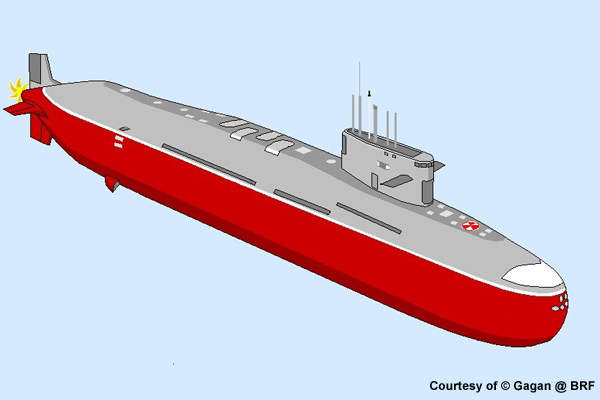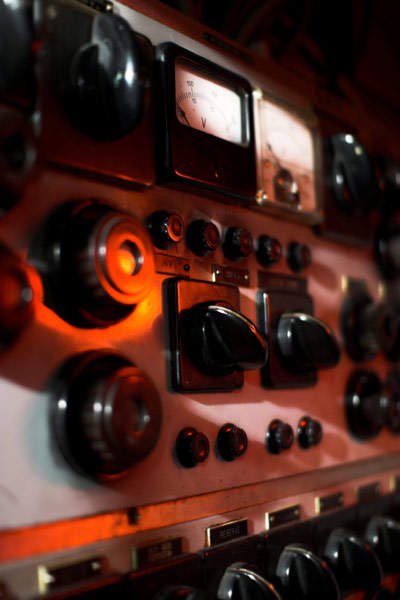INS Arihant is India’s first nuclear-powered submarine. The ship submersible ballistic, nuclear (SSBN) submarine was launched at the Indian Navy’s dockyard in Visakhapatnam, which is the headquarters of India’s Eastern Naval Command.
Indian Prime Minister Manmohan Singh, who has inaugurated the vessel into the Indian Navy, asserted that the indigenously built submarine would be used for self defence. The name Arihant derives from two words – Ari meaning enemy and Hanth meaning destroy.
Arihant, India’s first indigenously built nuclear submarine, cost $2.9bn. It was jointly developed by the Indian Navy, Bhabha Atomic Research Centre (BARC) and Defence Research and Development Organisation (DRDO) at the naval dockyard in Visakhapatnam. Russian designers assisted in building the vessel.
Other companies involved in the development of the submarine are Tata Power, a division of Tata Group and Larsen & Toubro (L&T), a technology, engineering, construction and manufacturing company.
The project, earlier known as the advanced technology vessel (ATV), has been under development since 1998. Construction of five more nuclear-powered submarines is also being planned. According to a report in the Indian Express, the hulls of the second and third submarines have already been constructed.
Arihant will be commissioned into the Indian Navy after extensive sea trials for at least two years. Initially harbour acceptance trials (HATs) would be conducted followed by sea acceptance trials (SATs).
Arihant has been developed as part of the military modernisation programme undertaken by India. The Indian Navy has a fleet of 16 diesel-electric submarines leased from Russia and Germany. However, the disadvantage with diesel electric submarines is that they cannot stay under water for an extended period.
Conventional diesel-electric submarines have to ascend to the surface each day to eject carbon dioxide produced by the generator. Nuclear-powered submarines, on the other hand, can stay under water for long durations without being detected. Arihant is expected to enhance the Indian Navy’s capability of delivering nuclear weapons from all terrains.
Arihant design
Arihant’s design is based on the Russian Akula-1 Class submarine. It weighs 6,000t. At a length of 110m and breadth of 11m, Arihant is the longest in the Indian Navy’s fleet of submarines and can accommodate a crew of 95. It can reach a speed of 12kt-15kt on surface and up to 24kt when submerged.
Arihant will be able to stay under water for long periods undetected due to the nuclear-powered 80MW pressurised water reactor (PWR). The PWR was developed by the Bhabha Atomic Research Centre with assistance from a Russian design team.
The submarine’s exterior is uneven and the hull is placed on a mat covered with tiles. The tiles help in absorbing sound waves and provide stealth capability to the submarine. Compared to conventional submarines, the conning tower of Arihant is situated near the bow instead of the centre.
The central part of the submarine’s body consists of the outer hull and an inner pressurised hull. The starboard side consists of two rectangular vents that draw in water when the submarine submerges into sea.
The Indian Navy and the DRDO together designed the submarine. Once the design was finalised detailed engineering was implemented at L&T’s submarine design centre using 3D modelling and product data management software.
Tata Power designed the control systems for the submarine. Walchandnagar Industries, a company specialising in execution of heavy engineering projects, designed parts of the steam turbine.
Tests and delivery
Arihant was launched for sea trials on 26 July 2009 and is due to be commissioned in 2011. The trials are being conducted at a concealed test area called ‘Site Bravo’. During harbour acceptance trials, the nuclear power plant and auxiliary systems of the submarine will be tested for stability.
The most crucial part of the trials will be the firing of the reactor. Once the reactor is fired all systems on board are tested on the inherent power of the submarine.
Arihant will be taken for a series of high-speed runs during the sea acceptance trials and its various components will be tested at different depths, temperatures and pressure.
The final phase of the trials will include weapon trials. During these trials actual firing of submarine-launched ballistic missiles (SLBM) will take place from the platform.
The crew of Arihant will be trained on the 12,000t Akula-II submarine. The submarine will be taken on lease from Russia in 2010 for ten years. Apart from the Akula-II submarine, six Scorpene attack submarines will also be acquired by the Indian Navy between 2012 and 2017.
Arihant armament
Arihant will be capable of carrying all types of missiles and will have underwater ballistic missile launch capability. It will carry 12 K-15 SLBMs that can be launched even under ice caps.
Tested in 2008, the K-15 missiles are 10.4m long and have a diameter of 1m. The 6.3t missiles can carry a 5t nuclear warhead targeted 750km away. The K-15 missiles, however, will be replaced later by the 3,500km range K-X missiles.
Apart from the K-15s, the submarine will carry a range of anti-ship and land-attack cruise missiles and torpedoes.
Submarine propulsion
A significant progress in the development of Arihant took place when the land-based pressurised water reactor became operational in 2004 at the Indira Gandhi Centre for Atomic Research in Kalpakkam, Chennai. Following this, miniaturisation of the land-based PWR had to be carried out to enable it to fit into a confined space in the submarine. The reactor consists of 13 fuel assemblies each having 348 fuel pins.
Several companies supplied components of the reactor. High grade steel supplied by Heavy Engineering Corporation, Ranchi was used to build the reactor vessel. The steam generator was provided by Bharat Heavy Electricals Limited (BHEL); and Audco India, Chennai built the pressure valves.
The PWR consists of a huge pressure hull, a tank containing water and a reactor. It also consists of a pressure vessel built from unique steel, a control room as well as an auxiliary control room.
The propulsion plant housing the reactor is 42m long and 8m in diameter. The complete propulsion plant along with the primary, secondary, electrical and propulsion systems occupy half of the submarine. To reduce the weight of the plant, light water and enriched uranium was used as opposed to non-enriched uranium used in land-based reactors.
Control and communication systems
Arihant is fitted with a combination of two sonar systems – Ushus and Panchendriya. Ushus is state-of-the-art sonar meant for Kilo Class submarines. Panchendriya is a unified submarine sonar and tactical control system, which includes all types of sonar (passive, surveillance, ranging, intercept and active). It also features an underwater communications system.




